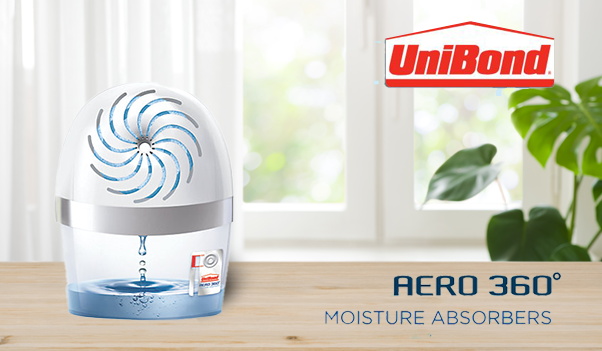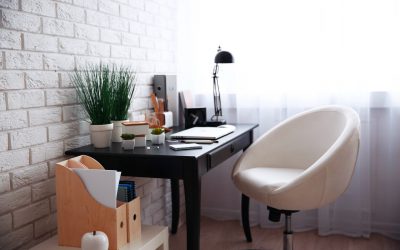Excess moisture in your home is a common problem that can have a number of negative consequences. When the air in your home is too humid, it can provide a breeding ground for mould and mildew, which can lead to respiratory problems such as asthma and allergies. Additionally, excess moisture can damage your home’s structure, causing problems with walls, ceilings, and flooring.
Identifying the Sources of Excess Moisture
Before you can tackle moisture and condensation, you need to identify the sources of excess humidity in your home. Here are some common culprits:
Cooking and showering – these activities release a significant amount of steam into the air. Steam is a form of water vapor, and when it condenses, it turns back into liquid water. This is why you often see condensation on windows and walls after cooking or showering. Try using a dehumidifier in your kitchen and bathroom!
Drying clothes indoors – wet clothes emit moisture as they dry. When you hang wet clothes indoors, the moisture evaporates into the air and increases the humidity level. This is why you may notice condensation in your home after drying clothes indoors.
Poor ventilation – inadequate airflow prevents moisture from escaping the house. Proper ventilation is essential for removing moisture from your home. When there is not enough ventilation, moisture can build up and lead to condensation. Using a dehumidifier might prevent moisture from building up!
Cold surfaces – condensation forms when warm, moist air meets cold surfaces, such as windows and walls. When warm, moist air comes into contact with a cold surface, it cools down and its ability to hold moisture decreases. This causes the water vapor to condense and form droplets of water. This is why you often see condensation on windows and walls in the winter, when the outdoor temperature is cold.
Removing Existing Moisture and Condensation
Once you’ve identified the sources of moisture, it’s time to address any existing moisture or condensation in your home. Here are some effective methods:
Use a dehumidifier – a dehumidifier extracts moisture from the air, reducing overall humidity levels. A dehumidifier is a machine that removes moisture from the air by passing it through a cooling coil. The moisture condenses on the coil and is collected in a tank, while the dry air is returned to the room. Dehumidifiers are particularly useful in areas of your home that are prone to condensation.
Wipe down windows and walls – use a dry cloth or squeegee to remove condensation from windows and walls. This is a quick and easy way to remove visible condensation from surfaces in your home.
Open windows – allow fresh air to circulate throughout the house by opening windows, especially after cooking, showering, or drying clothes. Opening windows is a simple yet effective way to remove excess moisture from your home. Fresh air has a lower humidity level than the air inside your home, so opening windows will help to draw out the moist air and replace it with drier air. If you can’t open your windows – try using a dehumidifier instead.
Ventilate bathrooms and kitchens – Use extractor fans to remove moisture from these moisture-prone areas. Extractor fans are designed to remove moisture-laden air from bathrooms and kitchens. When you use an extractor fan, it draws out the moist air and vents it to the outside, preventing it from building up in your home.
Preventing Future Moisture and Condensation
To prevent moisture and condensation from recurring, consider implementing these preventive measures:
Reduce moisture production – cover pots and pans when cooking, take shorter showers, and dry clothes outdoors whenever possible. Reducing the amount of moisture, you produce in your home is a key step in preventing condensation. By taking simple measures like covering pots and pans when cooking, taking shorter showers, and drying clothes outdoors whenever possible, you can significantly reduce the amount of moisture in the air.
Improve ventilation – open windows regularly, especially after moisture-generating activities. Ventilation is essential for removing moisture from your home. Make a habit of opening windows regularly, especially after activities that generate moisture, such as cooking, showering, or drying clothes. If you can’t open your windows regularly – try using a dehumidifier instead!
Maintain adequate heating – a warm home reduces air’s moisture-holding capacity, minimizing condensation formation. Warmer air can hold more moisture than colder air. So, by maintaining a comfortable temperature in your home, you can reduce the likelihood of condensation forming on cold surfaces.
Enhance insulation – proper insulation helps regulate indoor temperatures, reducing condensation on cold surfaces. Proper insulation helps to keep your home warm in the winter and cool in the summer. This can help to prevent condensation from forming on cold surfaces, such as windows and walls.
Use absorbent solutions – place moisture-absorbing materials, such as silica gel packets or activated charcoal bags, or a dehumidifier in damp areas to draw out excess moisture. Moisture-absorbing materials can help to remove excess moisture from the air in your home. These materials work by attracting and holding onto water molecules. Silica gel packets and activated charcoal bags are two common examples of moisture-absorbing materials.
Some additional tips!
Here are the additional tips for moisture and condensation control with more detailed explanations and images:
Keep Furniture Away from Walls – allow air to circulate freely between furniture and walls to prevent moisture buildup. When furniture is placed too close to walls, it can trap moisture and create a favourable environment for mould growth. Maintain a gap of at least a few inches between furniture and walls to allow air to circulate and prevent moisture from accumulating.
Repair Leaky Pipes – promptly address plumbing leaks to prevent moisture from seeping into walls. Leaky pipes can be a hidden source of moisture in your home. If you suspect a leak, check under sinks, behind toilets, and in crawl spaces. Promptly repair any leaks to prevent moisture from damaging your walls and creating a breeding ground for mould.
Use Mold-Resistant Paint – apply mould-resistant paint in bathrooms and kitchens to prevent mould growth. Bathrooms and kitchens are particularly prone to moisture buildup due to activities like cooking, showering, and washing dishes. Using mould-resistant paint in these areas can help to inhibit mould growth and maintain a healthy indoor environment.
Seek Professional Help – If moisture and condensation persist despite your efforts, consider consulting a professional damp proofing specialist. If you’ve tried all the DIY methods and still have moisture and condensation problems, it’s time to call in the professionals. A damp proofing specialist can assess your home’s moisture issues and recommend the most effective solutions.









